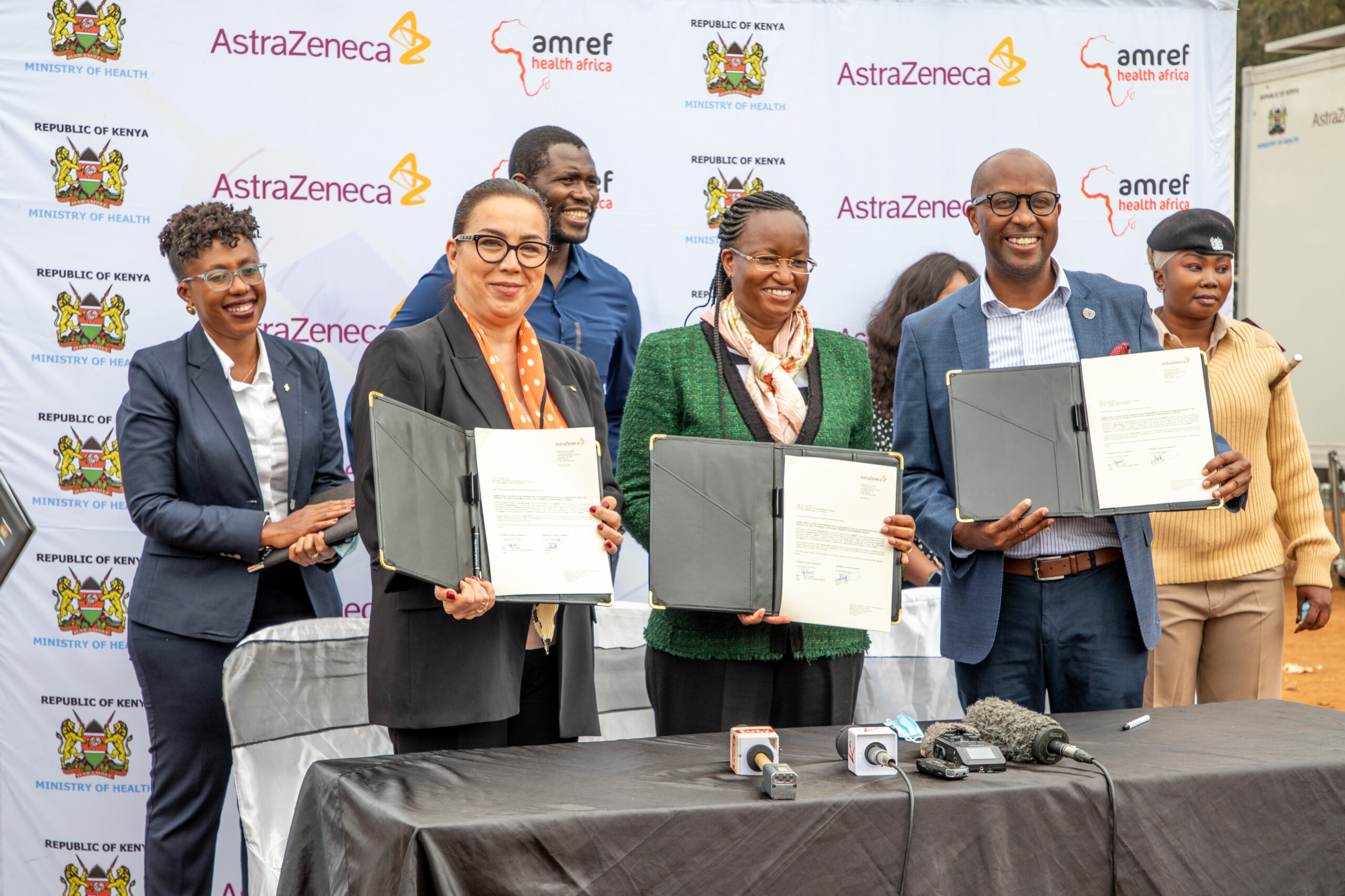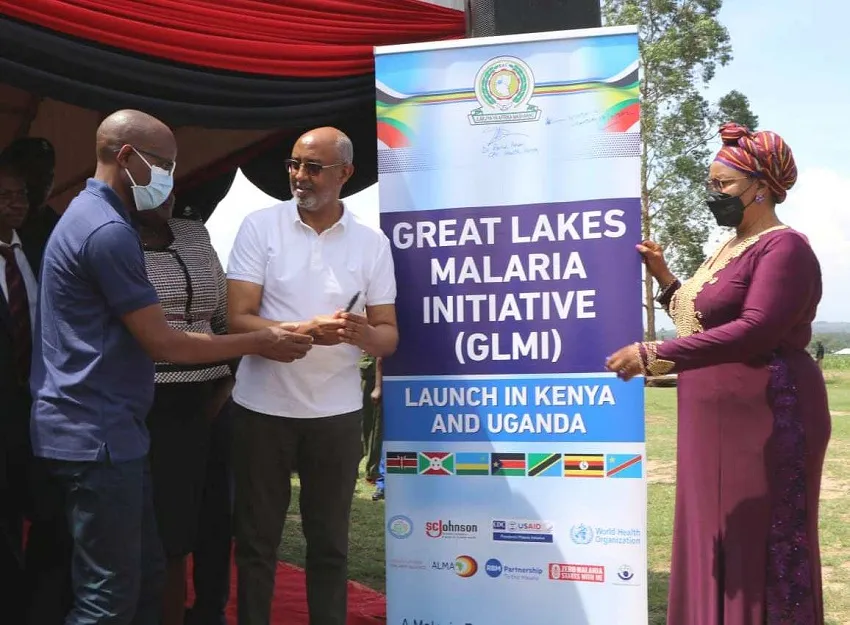Amref Health Africa’s Position Statement on Strengthening HRH in Kenya
Tuesday, 8 February, 2022

Kenya’s Health Sector Strategic focus is grounded in the principles of the Constitution of Kenya 2010, Vision 2030, the President’s Big 4 Agenda, and global commitments. The Constitution guarantees the right to health and provides for health services management through a devolved system of Governance. The Social Pillar for the Vision 2030 stipulates that to improve the overall livelihoods of Kenyans, the country has to achieve an efficient and high-quality health care system. This is reinforced by the efforts to attain universal health coverage (UHC) – which is a critical Pillar within the President’s Big 4 Agenda. The Ministry of Health’s human resource for health commitments signed at third global Human Resource for Health (HRH) forum (2013) in Brazil include:
• Devolving the Human Resource for Health Interagency Coordinating Committee (HRH-ICC) to 47 counties with linkage to the existing national coordinating mechanism by 2015;
• Recruiting at least 12,000 health workers per year by 2017 for health care delivery;
• Recruiting at least 40,000 community health extension workers (CHEWS) by 2017 to support community level health services and the one million community health worker campaign;
• Increase spending in the Health Sector on HRH beyond staff salary and allowances by 2017;
• Promote Public Private Partnership for Health Financing.
While the health sector has recorded several achievements towards realising the above commitments, there are HRH challenges emerging from the devolved health system. Some of which include: (i) policy gaps to guide health workforce management; (ii) weak HRH coordination between county and national level of government;
(iii) prolonged health workers’ strikes; (iv) inadequate HRH management and leadership capacity; (v) inadequate
and inequitable distribution of health workers; (vi) low absorption of skilled health professionals into active workforce; and, (vii) inadequate number of trained specialists and sub-specialists in the counties. To address the health workforce challenges, Kenya has developed a strategic focus defined in the Kenya Health Policy (2012-2030) elaborates the long-term policy directions the country intends to achieve in pursuit of the imperatives of the Constitution of Kenya 2010, the Vision 2030, the Big 4 Agenda, and the Kenya HRH Strategy (2019-2023).
The Current Situation
It is notable that Kenya has made remarkable strides towards improving national health workforce accounts by embracing technology and rolling integrated Human Resource Information System (iHRIS) and regulatory Human Resource Information System (rHRIS). The iHRIS and rHRIS systems provide real time HRH data on deployment, licensing and registration status. iHRIS is utilised by most counties to inform decisions including on recruitment, deployment, training, promotions, while rHRIS is utilised by regulatory bodies and it provides for self-service for health workers, especially during annual license renewals.
POSITION STATEMENT
The Kenya Community Health Strategy (2014-2019) provides a framework to strengthen the delivery of integrated
comprehensive and quality community health services for all population cohorts. The strategy focuses on placing
formally employed government workers, Community Health Extension Workers (CHEW), into communities and
households as an extension of static health facilities. The strategy guides that two CHEWS should serve a community unit supported by ten Community Health Volunteers (CHVs). Kenya committed to recruiting at least 40,000 new CHEWs by 2017 to support community-level health services and the One Million Community Health Worker (CHW) Campaign, which the Government of Kenya signed and declared in November 2013 during the Global HRH Conference. However, the country has approximately 1,600 (9%) CHEWs against an estimated requirement of 18,000.
The estimated number of CHVs at the time of developing the strategic plan was about 60,000 against the optimal number of 102,690. The CHVs are, however, unevenly distributed across the country. There are notable current efforts in the country towards advancing systems thinking for primary health care at the community level and institutionalisation of community health within health systems. This provides an opportunity to build on gains made and further strengthen community health systems at both national and county levels.
Amref Health Africa in Kenya works with various counties to support development/enactment of a number of policies for health systems strengthening. Some of the core areas include – National CHS Bill 2020, County CHS Bills, Facility Improvement Fund (FIF) Bills, Health Facility Management Committee Capacity Building (2016/2018), and Sustainable Financing Accountability for Community Health Services.
Our Asks
Amref Health Africa, therefore, urges as follows:
The National and County Governments to:
i. Fully operationalise community health services as a platform for primary health care and UHC by ensuring
community health units operate effectively with adequate human and financial resources.
ii. Establish progressive frameworks for improved industrial relations between national and county governments and health worker unions for improved welfare and productivity of health workers.
iii. Mainstream CHWs into the health system by integrating CHWs into the national HRH strategic framework including the execution of related strategies and establishment of a legal framework that provides for recognition, training, and compensation and a clear career path for CHWs.
iv. Promote use of modern technology in healthcare to improve service delivery and access to health care
v. Increase sustainable and equitable domestic financing for community health as part of primary health care. This includes mainstream pandemic preparedness and response investments with robust contributions to the health system inclusive of primary health care and community health.
Our Commitment
Amref Health Africa commits to use its resources including a programmatic footprint in all the 47 counties and the community trust capital to advocate for, and support a sustainable HRH for the achievement of UHC by working with the national government, the counties, and the Council of Governors to address existing capacity requirements.







